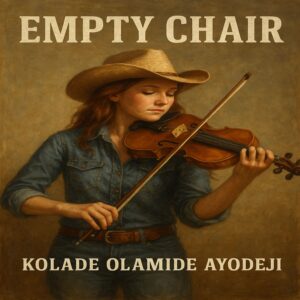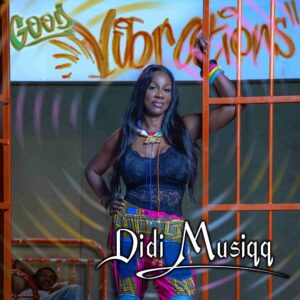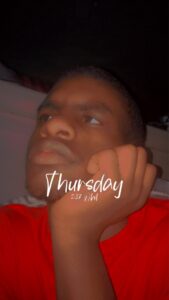Cesária Évora csings morna. Screenshot from YouTube (user alcom34)
Morna, traditional music and dance from Cape Verde, was approved by UNESCO as an Intangible Cultural Heritage of Humanity.
This was announced by Cape Verde’s Minister of Culture, Abraão Vicente, on 7 November:
Caros cabo-verdianos, tenho a sorte, a honra e o privilégio de vos comunicar que hoje o comité técnico dos peritos da UNESCO aprovou o dossier da morna a Património da Humanidade…A nação já pode celebrar: a morna já é Património da Humanidade.
Dear Cape Verdeans, I have the good fortune, honour and privilege to inform you that today UNESCO’s technical committee of experts has approved Morna’s World Heritage dossier…The nation can celebrate now: Morna is already World Heritage.
Cape Verdean singer Cesária Évora (1941-2011) was one of the best-known performers of the genre and was dubbed “the queen of Morna”.
Cape Verde’s official UNESCO application page says:
A Morna é um genéro performativo de Cabo Verde que reúne a voz, a música, a poesia e a dança. É uma expressão musical cuja prática não faz distinção de género. Usualmente cantada por uma só pessoa é acompanhada por instrumentos acústicos destacando-se o violão. Surgiu no século XIX, evoluindo do cruzamento de estilos musicais com fortes raízes africanas, o landum, com melodias oriundas da Europa.
Trata-se de uma canção melódica, quaternário, geralmente usando esquemas tonais menores clássicos. Nessa canção apela-se ao sentimento, versando temas vinculados ao amor, saudade, sofrimento, desprezo. Geralmente pode-se escutar a morna em ambientes informais onde decorrem as famosas tocatinas, contudo, é nas famosas «noites caboverdianas» que se pode escutar este género musical.
Morna is a performative genre from Cape Verde that combines voice, music, poetry and dance. It is a musical expression whose practice makes no gender distinction. Usually sung by a single person, it is accompanied by acoustic instruments, especially the guitar. It appeared in the nineteenth century, evolving from the mixing of musical styles with strong African roots, the landum, with melodies from Europe.
It is a melodic, quadruple song, usually using classical minor tonal schemes. This song appeals to feelings, dealing with themes related to love, longing, suffering, contempt. Usually one can listen to Morna in informal contexts where the famous tocatinas take place, though, it is on the famous “Cape Verdean nights” where one can listen to this musical genre.
Cape Verde’s Cultural Heritage Institute said on Facebook:
A aprovação da Morna, segundo a Comissão da UNESCO, vai aumentar a consciencialização das pessoas sobre a importância da cultura cabo-verdiana e, especialmente, do crioulo cabo-verdiano, aumentando a auto-estima e o orgulho da população das ilhas, em torno das suas diferentes expressões culturais.
A coesão social será também reforçada, conduzindo ao desenvolvimento de novas formas de colaboração entre os grupos musicais, investigadores e instituições públicas e privadas.
A aprovação criará também novas oportunidades para a troca de conhecimentos entre gerações e as pessoas das diferentes regiões do arquipélago e da comunidade imigrante e demonstrar, ainda, a diversidade cultural da música e da cultura do atlântico.
The adoption of Morna, by the UNESCO Commission, will increase people’s awareness of the importance of Cape Verdean culture and, especially, of Cape Verdean Creole, increasing the self-esteem and pride of the people of the islands about their different cultural expressions.
Social cohesion will also be strengthened, leading to the development of new forms of cooperation between musical groups, researchers and public and private institutions.
The acceptance will also create new opportunities for the exchange of knowledge between generations and people from different regions of the archipelago and the immigrant community, and will also show the cultural diversity of the music and culture of the Atlantic.
The decision should be formally adopted by UNESCO in December at a ceremony in Colombia.
The announcement was celebrated by numerous people. Jaqui Marques da Silva, a resident of the capital Praia, said:
Dia deveras memorável e histórico para a cultura cabo-verdiana. Motivo para estarmos todos muito orgulhosos. Ainda que a obra seja de todos nós, porque a morna é expressão maior da alma cabo-verdiana, felicito-o Abraão Vicente Stephanie Duarte Vicente e a toda a equipa que, de forma empenhada, trabalhou para que o sonho pudesse ser realidade. Aos nossos músicos, todos sem excepção, as minhas felicitações.
Very memorable and historic day for Cape Verdean culture. A reason for all of us to be very proud. Although it belongs to all of us, because Morna is the greatest expression of the Cape Verdean soul, I congratulate Abraão Vicente Stephanie Duarte Vicente and the whole team who, in a committed way, worked so that the dream could be realized. To our musicians, without exception, my congratulations.
For Manuel Viega, a commentator and journalist, Morna was already part of World Heritage even before the current announcement:
A MORNA, ANTES DO RECONHECIMENTO DA UNESCO,
JÁ ERA, PARA NÓS, PATRIMÓNIO DA HUMANIDADE
A Cidade Velha foi declarada, em 2009, Património da Humanidade, em grande medida, porque Cabo Verde foi o berço da morna, do crioulo e da nossa crioulidade. É por isso que a decisão da Comissão Técnica do Património Mundial em recomendar a inscrição da MORNA na Lista de Património da Humanidade é apenas um reconhecimento de algo que já é, que já era.
Não deixa de ser muito importante essa recomendação, porém o mais importante é o reconhecimento que quem criou a Morna tem desse ato de criação.
Tudo isto para dizer que há muito que celebrei a Morna como Património da Humanidade. Que todos celebrem, com orgulho e patriotismo, esse filho querido e amado da nossa crioulidade.
MORNA, BEFORE THE RECOGNITION OF UNESCO,
…WAS FOR US ALREADY HERITAGE OF HUMANITY…
The Old City was declared a World Heritage Site in 2009, largely because Cape Verde was the cradle of Morna, Creole and our Creole. That is why the decision of the World Heritage Technical Committee to recommend the inscription of MORNA on the World Heritage List is only a recognition of something that is, and already was.
This recommendation is still very important, but the most important thing is the recognition that those who created Morna have this ability for creation.
All this to say that I have long celebrated Morna as World Heritage. May everyone celebrate with pride and patriotism this dear and beloved son of our creolity.
For Jorge Martins, it is the highest point of Cape Verdean culture on the ascent:
Que grande notícia! Cabo Verde deu mais um passo importantíssimo na afirmação da sua identidade.
A nossa cultura foi merecidamente premiada e os nossos artistas que sempre lutaram para a preservação, promoção e divulgação desta nossa rica tradição, estão todos de parabéns!
Viva a morna!
Viva as nossas ricas tradições!
What great news! Cape Verde has taken another very important step in the consolidation of its identity.
Our culture was deservedly awarded and our artists, who have always fought for the preservation, promotion and spreading of our rich tradition, are all to be congratulated!
Long live Morna!
Long live our rich traditions!





